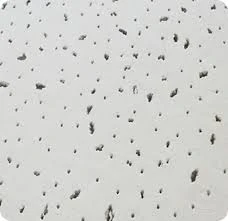Nov . 10, 2024 06:16 Back to list
Comparing Gypsum and PVC Ceilings for Your Home Renovation Needs
Gypsum vs PVC Ceiling A Comprehensive Comparison
When it comes to interior design, the choice of ceilings plays a crucial role in enhancing the overall aesthetics and functionality of a space. Two popular options for ceiling materials are gypsum boards and PVC (Polyvinyl Chloride) panels. Each material has its own set of advantages and disadvantages, making the selection process challenging. In this article, we’ll delve into the characteristics, benefits, and drawbacks of gypsum and PVC ceilings to help you make an informed decision.
Gypsum Ceilings
Gypsum ceilings, also known as drywall or plasterboard ceilings, are composed of a mineral called gypsum, which is sandwiched between two sheets of thick paper. They are widely used in residential and commercial settings due to their excellent finishing and ease of installation.
Advantages of Gypsum Ceilings
1. Aesthetic Appeal Gypsum ceilings can be finished in a variety of textures and paint colors, allowing for creative design possibilities. They offer a seamless and smooth finish that can enhance the elegance of any room.
2. Fire Resistance One of the key benefits of gypsum is its natural fire-resistant properties. Gypsum board can help slow down the spread of fire, providing additional safety for homes and buildings.
3. Sound Insulation Gypsum ceilings are known for their ability to absorb sound, which makes them an excellent choice for spaces where noise control is important, such as offices or theaters.
4. Durability Properly installed gypsum ceilings can last many years. They are resistant to wear and tear, making them a reliable choice for high-traffic areas.
5. Eco-Friendly Gypsum is a natural mineral, and many gypsum board manufacturers use recycled materials in their products, making them an environmentally friendly option.
Disadvantages of Gypsum Ceilings
1. Moisture Sensitivity Gypsum ceilings are vulnerable to moisture and humidity. In areas with high humidity, like bathrooms or kitchens, gypsum can sag or develop mold if not treated properly.
2. Complex Installation While installation can be straightforward, it often requires skilled labor to ensure a perfectly smooth finish and to tackle challenges like drywall joints and corners.
PVC Ceilings
gypsum vs pvc ceiling

PVC ceilings, on the other hand, are made from synthetic plastic. They are available in various designs, colors, and patterns, making them a versatile option for modern interiors.
Advantages of PVC Ceilings
1. Water Resistance One of the standout features of PVC ceilings is their excellent water resistance. They are ideal for humid environments like bathrooms, kitchens, and basements where moisture is a concern.
2. Ease of Installation PVC panels are lightweight and easy to install, often requiring minimal tools and expertise. This can significantly reduce labor costs and installation time.
3. Low Maintenance PVC ceilings are easy to clean and maintain. They do not require painting and can be wiped clean with a damp cloth, making them a practical choice for busy homes.
4. Fire Retardant While not as inherently fire-resistant as gypsum, many PVC ceiling products are treated to be fire-retardant, providing some level of safety.
5. Diverse Aesthetics PVC comes in a myriad of designs, including wood, marble, and metallic finishes, allowing homeowners to create their desired look easily.
Disadvantages of PVC Ceilings
1. Less Durable Although PVC ceilings are resilient, they can be more prone to scratching and may not have the same longevity as gypsum ceilings.
2. Environmental Concerns Being a synthetic product, PVC raises environmental concerns due to its production process and disposal issues, impacting its eco-friendliness.
3. Limited Sound Insulation PVC lacks the sound-absorbing qualities of gypsum, which may not be suitable for spaces where noise control is a priority.
Conclusion
Choosing between gypsum and PVC ceilings depends on various factors, including the environment of the space, aesthetic preferences, and budget. Gypsum ceilings offer elegance and durability but require careful maintenance, especially in humid areas. PVC ceilings, on the other hand, provide moisture resistance and ease of installation, making them suitable for modern needs but may sacrifice some longevity and environmental considerations.
Ultimately, understanding the unique benefits and limitations of each material will guide you in making the best choice for your ceiling design needs.
-
Quality Ceiling Trap Doors & Access Panels | Easy & Secure AccessNewsAug.30,2025
-
Durable Ceiling T Grid Systems | Easy InstallationNewsAug.29,2025
-
PVC Gypsum Ceiling: Durable, Laminated Tiles for Modern SpacesNewsAug.28,2025
-
Pvc Gypsum Ceiling Is DurableNewsAug.21,2025
-
Mineral Fiber Board Is DurableNewsAug.21,2025
-
Ceiling Tile Clip Reusable DesignNewsAug.21,2025







